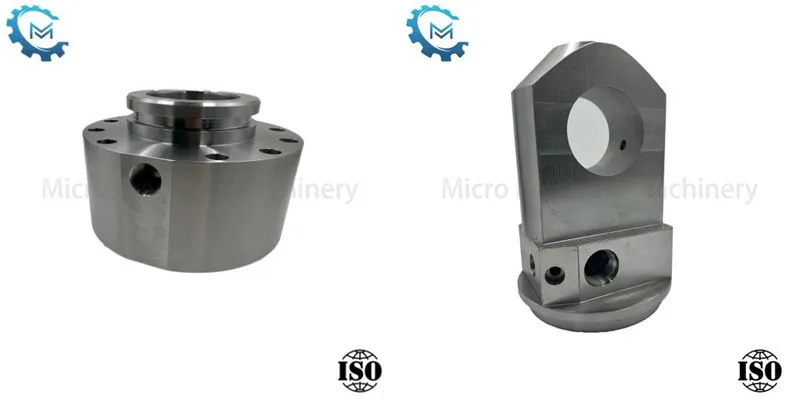- English
- Español
- Português
- русский
- Français
- 日本語
- Deutsch
- tiếng Việt
- Italiano
- Nederlands
- ภาษาไทย
- Polski
- 한국어
- Svenska
- magyar
- Malay
- বাংলা ভাষার
- Dansk
- Suomi
- हिन्दी
- Pilipino
- Türkçe
- Gaeilge
- العربية
- Indonesia
- Norsk
- تمل
- český
- ελληνικά
- український
- Javanese
- فارسی
- தமிழ்
- తెలుగు
- नेपाली
- Burmese
- български
- ລາວ
- Latine
- Қазақша
- Euskal
- Azərbaycan
- Slovenský jazyk
- Македонски
- Lietuvos
- Eesti Keel
- Română
- Slovenski
- मराठी
- Srpski језик
What is the difference between an assembled cylinder base end and a welded cylinder base end?
2025-03-03
As a manufacturer of hydraulic cylinders, Qingdao Micro Precision Machinery Co., Ltd. has been committed to providing customers with high-quality hydraulic cylinder products. In the production process, the connection process of the cylinder base is one of the key links, and assembling the cylinder base and welding the cylinder base are two common connection methods. These two processes have their own characteristics and are suitable for different application scenarios.
1. Main distinction
Connection method: The assembled cylinder base is fixed to the cylinder base and the cylinder barrel by mechanical means such as bolts, flanges, and clamps. The welded cylinder base is welded to the cylinder base and the cylinder barrel by welding processes (TIG welding, submerged arc welding, etc.).
Disassembly: The assembled cylinder base is disassembled for easy repair or replacement of parts. The welded cylinder base is not disassembled and needs to be replaced as a whole or cut for repair.
Sealing: The assembled cylinder base relies on seals (such as O-rings and gaskets), and there is a risk of leakage (especially under high pressure or when the seals are aged). The welded cylinder base weld directly forms a seal, with a low risk of leakage, and is more suitable for high-pressure environments.
Strength and rigidity: The assembled cylinder base is limited by the strength of the bolts/flanges and has weak impact resistance. The welded cylinder base has a high overall structural strength and is more resistant to impact and deformation.
2. Analysis of specific differences
(1) Structure and process requirements
Assembling the cylinder base
Key process: The end of the cylinder needs to be processed with threads or flange holes (accuracy requirements IT7 level). The bolt preload needs to be precisely controlled (such as M24 bolt torque 200-250N·m).
Seal design: A sealing groove needs to be set on the joint surface and an O-ring needs to be installed (materials commonly used are NBR or fluororubber).
Welding the cylinder base
Key process: The bevel needs to be cleaned before welding (no oil stains or rust). Welding parameters are strictly controlled (such as current 180-220A, argon gas flow 10-15L/min). Stress relief annealing is required after welding (600-650℃ for 2 hours).
(2) Performance comparison
The maximum pressure of the assembled cylinder base is ≤25MPa (depending on the strength of the seal and bolts, and the welded cylinder base is ≥35MPa (the strength of the weld is close to the base material).
Fatigue resistance, the bolts of the assembled cylinder base are easy to loosen and need to be checked regularly; the overall structure of the welded cylinder base is stable and has a long fatigue life.
(3) Application scenario examples
Applicable scenarios for assembled cylinder base
Machine tool hydraulic system: low pressure (10-15MPa), seals need to be replaced regularly.
Test bench: requires quick disassembly to adjust the cylinder length or replace accessories.
Low-cost equipment: reduces investment in welding processes, such as hydraulic cylinders for agricultural machinery.
Applicable scenarios for welded cylinder base
Excavator hydraulic cylinder: withstands frequent impact loads (such as rock excavation), and requires a high-rigidity structure.
Metallurgical rolling mill: high temperature and high pressure (oil temperature ≥80℃, pressure 30MPa), relying on weld sealing.
Deep-sea equipment: under high hydrostatic pressure, the reliability of welded structure is better than mechanical connection.
Conclusion
In short, whether it is welding the cylinder base or assembling the cylinder base,we are committed to ensuring the quality and performance of the products through advanced technology and processes.





